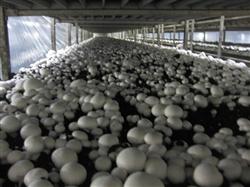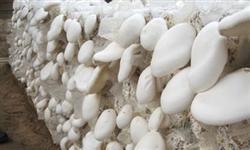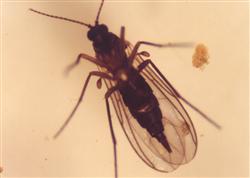Mushroom growth "acne" what's going on?

Some friends of mushroom farmers report that they grow "acne" on the mushroom, that is, the mushroom cover is covered with small pimples, seriously affecting the quality of goods, difficult to sell, ask what to do? This symptom is "tumor cover disease". This kind of diseased mushroom is not caused by any bacteria, but a physiological reaction formed by the low temperature of its growing environment, just as when the temperature is too low, the human body gets goose bumps and sweat when the temperature is too high. It can be eaten as a normal mushroom, do not worry, but to a certain extent affect the commercial value of mushrooms. The main cause of Pleurotus ostreatus is that the temperature is too low. However, some mushroom farmers consulted: the temperature of the mushroom shed can reach 8 ℃, or even more than 10 ℃, why does this phenomenon still happen? It is understood that most mushroom farmers measure the temperature at noon, and the temperature measurement is mostly at a height of about 1.5 meters from the ground, rather than the ground temperature, which creates an illusion. As we all know, noon, especially around 2 o'clock in the afternoon, is the hottest time of the day, and temperature measurement at this time is biased. The correct method: one is to use the highest and lowest thermometer, which can display the maximum and minimum temperature of 24 hours a day, and the other is to measure around 2: 00 p. M. and 3: 00 a. M. respectively. the simple calculation method is to add and divide the data of the two temperature measurements to get the average temperature of the day. However, whether the average temperature is appropriate or not does not represent the lowest temperature that the mushroom can bear. In general, under the condition of low temperature in winter, the lower temperature that the mushroom can bear should be compared with the lowest temperature in the mushroom shed. If it exceeds the lower limit, tumor cover disease will occur. It should be said that in winter production, how to raise the temperature of the mushroom shed is the key to the occurrence of tumor cover disease, so what preventive measures should be taken? 1. The sun heats up. By removing the grass from 9: 00 a.m. to 3: 00 p.m., the greenhouse temperature can be increased by 5 ℃ ~ 10 ℃ by daylight, and even by 15 ℃ in fine, windless weather. However, as the ultraviolet light in the sun is easy to have a negative impact on the mycelium of Pleurotus ostreatus and its young mushrooms, a sunshade net or black plastic film should be pulled at the top of the shed to make the heat enter the shed and block the light. two。 Add a small arch shed. Mainly for border planting, the method is to set up a small arch shed on the fungus bed, cover it with black plastic film, and also remove the grass from 9: 00 a.m. to 3: 00 p.m., so that the temperature of the greenhouse rises rapidly. After covering the grass in the afternoon, all the small arch shed will be opened, one is to make it ventilated, the other is to make the heat uniform, stop for about an hour, cover the small arch shed to keep warm. 3. The coal stove heats up. The coal stove is installed in the sundries room outside the shed, and the fire wall is built with bricks and blanks in the middle of the shed or against the north wall instead of the chimney, so that the smoke is discharged from the other end of the shed, which can not only effectively increase the temperature of the shed, but also not affected by the weather. If it is combined with the first method, that is, the sun temperature increases in sunny days and the coal stove heats up in rainy and snowy days, the production effect of ensuring greenhouse temperature and saving fuel can be achieved. In addition, such as building the mushroom shed into a winter-warm greenhouse, or building a Huilong fire tunnel underground in the greenhouse, or installing soil heating, and so on, will be of great help to raise the temperature.
- Prev

Six taboos in mushroom planting
The main results are as follows: 1. The pre-wetting is insufficient: the straw should be fully soaked, and the straw that is not fully soaked needs a lot of water when turning the heap, and the hypha growth will be affected if the moisture cannot be replenished before the second turn. 2. Uneven pile turning: the raw meal should be put in the middle, the clinker on both sides, the middle on both ends and the middle on both ends.
- Next

A new method of dung-free cultivation of mushroom
Fungus mosquitoes, also known as "gall midges", reproduce very fast, often carrying bacteria to make mushrooms sick, and their larvae (maggots) can be divided into white and orange. Mosquitoes often lay eggs on the compost that produces mushrooms, and the eggs begin to hatch before the hyphae grow up. The larvae grow up before the first batch of mushrooms come out, and are harmful to the stalks and lids of mushrooms. Because.
Related
- Fuxing push coffee new agricultural production and marketing class: lack of small-scale processing plants
- Jujube rice field leisure farm deep ploughing Yilan for five years to create a space for organic food and play
- Nongyu Farm-A trial of organic papaya for brave women with advanced technology
- Four points for attention in the prevention and control of diseases and insect pests of edible fungi
- How to add nutrient solution to Edible Fungi
- Is there any good way to control edible fungus mites?
- Open Inoculation Technology of Edible Fungi
- Is there any clever way to use fertilizer for edible fungus in winter?
- What agents are used to kill the pathogens of edible fungi in the mushroom shed?
- Rapid drying of Edible Fungi

